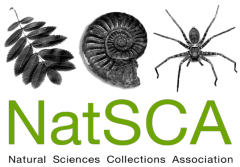An Introduction to Natural Science Collections Georeferencing
Many of us with historic collections will be familiar with how opaque the information on a label can be, through poor handwriting, placenames that no longer exist, being written in a different language or they can just be incredibly vague. Uncovering this information can add a whole extra level of significance. As many of us are looking more into digitisation and providing local and global access to our collections, the team working at the Natural History Museum on the Distributed System of Scientific Collections (DiSSCo) project are here to give us the tools to find the answers.
This online workshop, organised by NatSCA in partnership with DiSSCo UK, aims to cover the essentials of geo-referencing: what is it, why is it important, what tools are available, case studies and instances where it is possible, impossible, why and what makes it difficult.
The mixture of talks will provide a great opportunity to ask the experts questions if you are dealing with something unfamiliar, how to counteract these issues or mark these issues and problems in records to make researchers aware of the data’s accuracy.
The event was recorded and can be viewed online via the NatSCA YouTube channel. [External Link]
Associated resources can be found below:
Georeferencing Resource - Google Sheets
Georeferencing_resource/Transcription & georeferencing - Resources and information.docx at main · kris-loh/Georeferencing_resource · GitHub
